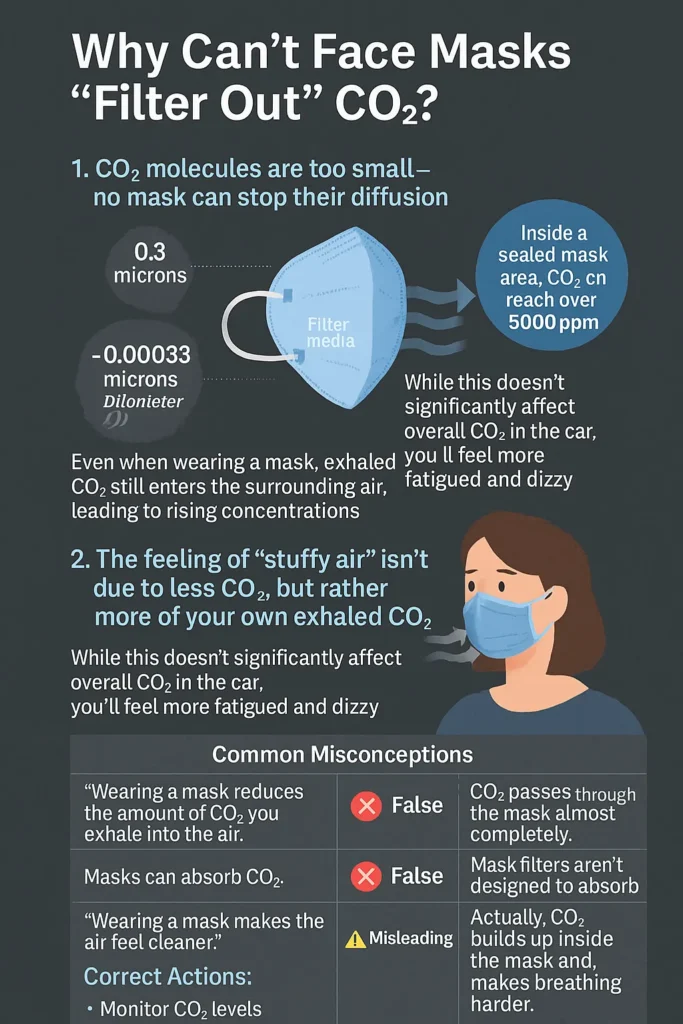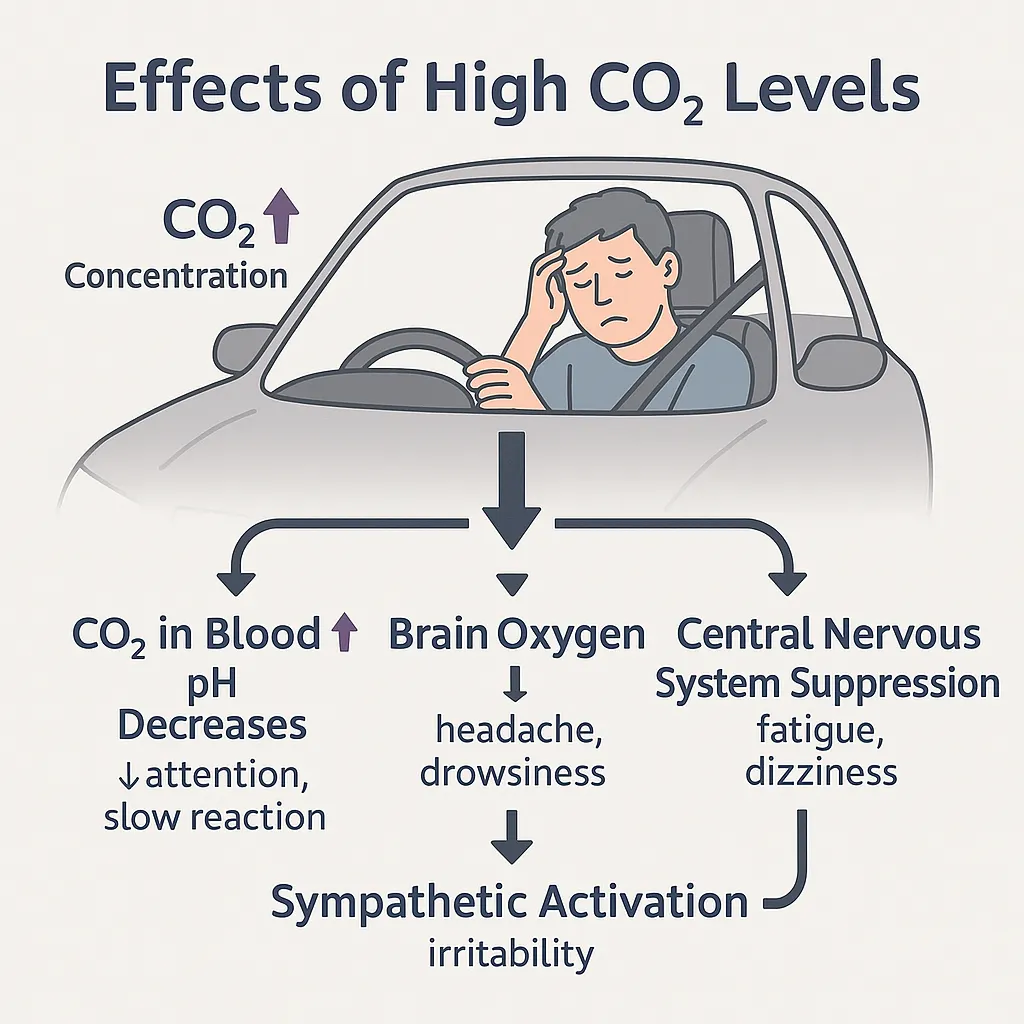Have you ever turned on your car’s air conditioning and still felt like the air inside is stale, heavy, or unclear — even though it’s cool? You’re not imagining it. The temperature may be comfortable, but that doesn’t always mean the air quality is good.
Here’s why that happens — and what you can do about it.
🔁 1. Recirculation Mode Traps CO₂
Most drivers use recirculation mode when turning on the A/C — especially in hot weather. This mode keeps cooling the same air inside the cabin, which helps the car cool down faster and improves fuel efficiency.
But there’s a problem:
You’re breathing in the same air repeatedly, and with every breath, you release carbon dioxide (CO₂). CO₂ builds up quickly in a closed space — especially if:
- The windows are up
- The A/C is on recirculation
- There are multiple passengers
Result? The air feels stale, your brain feels foggy, and you might even feel drowsy — even though the temperature is cool.
🧪 2. High CO₂ = Poor Air Quality (Even If You Can’t Smell It)
CO₂ is colorless and odorless, so you won’t notice it rising. But at levels above 1000–1500 ppm, people often experience:
- Fatigue
- Difficulty concentrating
- Headaches
- A sense that the air is “heavy” or “not fresh”
This is a common problem on long drives, in traffic, or when idling with the A/C on.
🦠 3. Cabin Filters Can’t Remove CO₂
Your car’s air filter may remove dust and allergens, but it doesn’t filter out gases like CO₂. So even if the cabin filter is clean, it won’t solve the issue if you’re not bringing in outside air.
🌬 4. How to Make the Air Feel Fresh Again
✅ Switch to fresh air mode (outside air) every 15–30 minutes
✅ Crack a window slightly, especially on longer drives
✅ Use a CO₂ monitor to keep an eye on invisible buildup
✅ Consider replacing your cabin air filter regularly to keep particles low — but remember, it won’t fix CO₂ alone
📌 Summary
Even with the A/C running, the air inside your car can feel stuffy if you’re not getting enough fresh air.
Temperature ≠ air quality.
A comfortable cabin needs both cool air and clean air.


